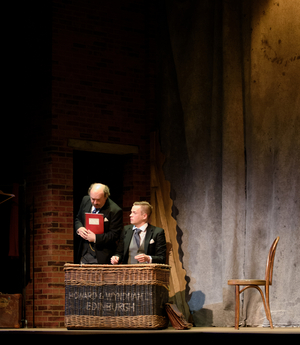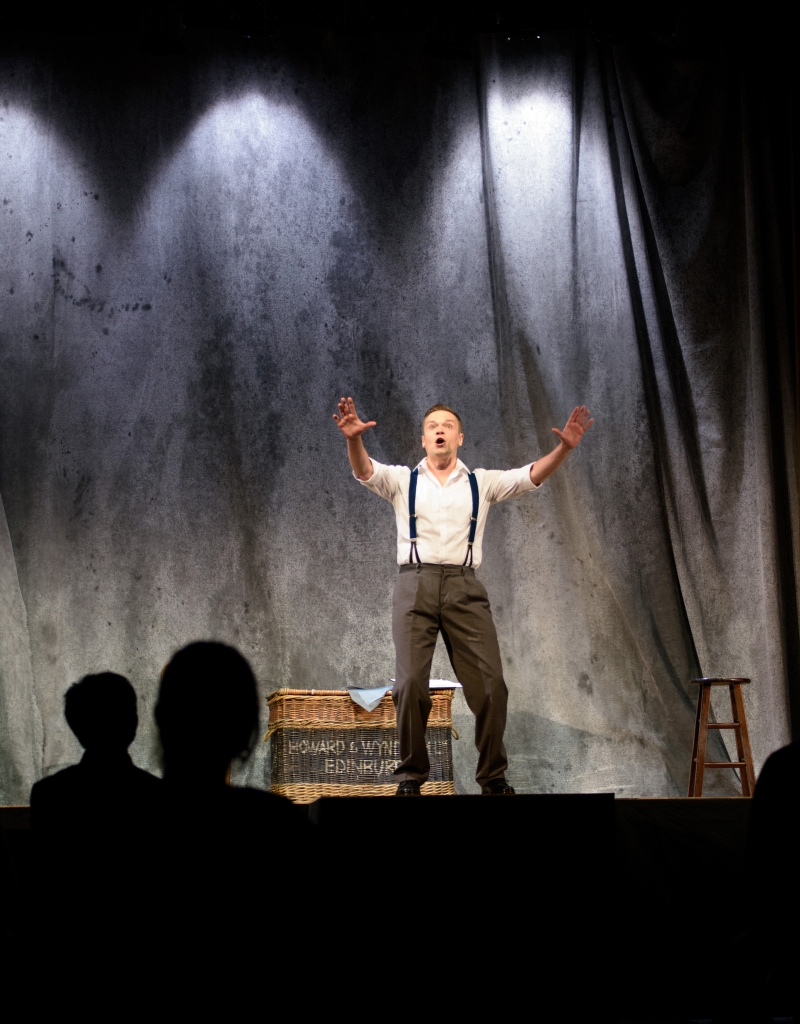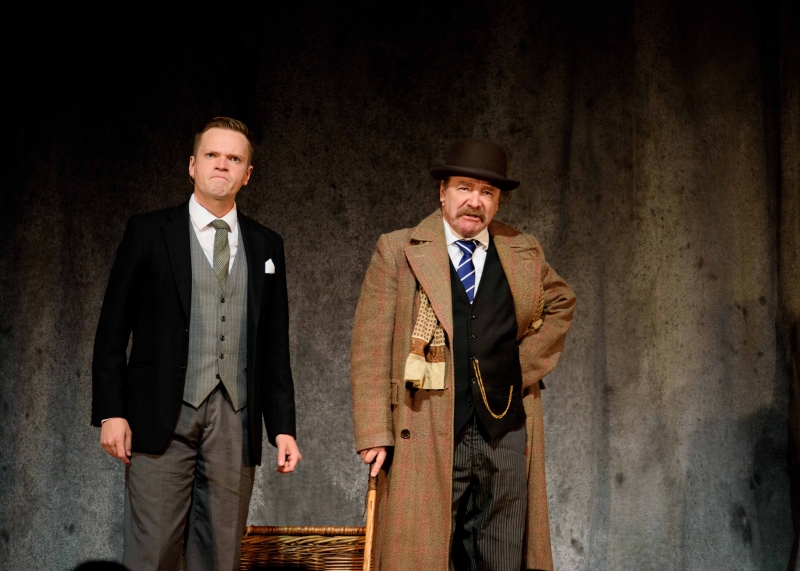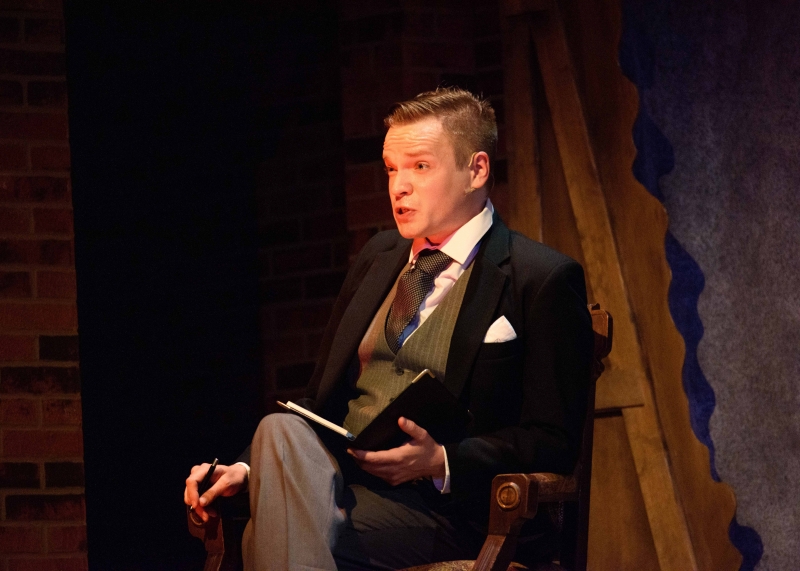Review: Spoleto's Festival Hall Isn't Ideal for THE WOMAN IN BLACK
A classic British creepshow plays at Spoleto through June 13

Perhaps we can declare that social distancing is as antithetical to telling a gripping ghost story as it is to sustaining a great vibe at a bar or a pub. After a 30-year run in London's West End, where it remains on a pandemic-induced hiatus, THE WOMAN IN BLACK certainly has a pedigree to please. The play, adapted by Stephen Mallatratt from Susan Hill's 1983 novel, is only surpassed by Dame Agatha Christie's The Mousetrap as the longest-running play in West End history.
Currently in a 16-performance run at Spoleto Festival USA through June 13, the production is the real McCoy, delivered by the same artistic team that brought an acclaimed transplant of this creepshow to the McKissick Hotel in New York in January 2020. Yet between the time that THE WOMAN IN BLACK was announced as part of Spoleto's 2021 lineup and opening night, the chosen venue for this production - the intriguing Charleston Visitor Center Bus Shed - had to be changed.
Now it's completely indoors at Festival Hall, better known to longtime Spoleto subscribers as Memminger Auditorium. While the Memminger has been hospitable to such dark and gloomy pieces as Don Giovanni and Amistad, both of them lavishly and audaciously staged, the house seems to overwhelm this smaller, more conventional and portable spectacle. Nor does the spacing of our seats, with no empty seats in the spaces between us, help the atmosphere. In London, where it will play to 432 seats on three levels at the Fortune Theatre, you would probably feel much closer - and certainly more huddled together.
The conspicuously diminutive proportions of this production seem to most adversely affect Peter Bradley as Arthur Kipps. Shambling, humdrum, and somewhat diffident, Kipps has sought out the help of The Actor, to assist him in narrating his ghostly encounters to his family - and hopefully exorcize his feelings of being haunted and accursed. Not the boldest, most flamboyant or operatic of stage heroes.

Nick Owen as The Actor, on the other hand, has the luxury of being full-throated from the moment he enters the hall, hails Arthur from afar, and joins him onstage. Encouraging Kipps to project and emote, Owens can sustain a professional polish and a pedagogic authority, keeping his frustrations genially in check while trying to coax the aging solicitor into coming out of his shell.
Yet Arthur keeps resisting, meaning that we won't hear Bradley projecting for a while. Mallatratt takes a little too long in building his own theatrical framework around Hill's narrative; and director Robin Herford, who has not only directed all the seminal productions of THE WOMAN IN BLACK but also commissioned the original adaptation, is in no hurry. More ghost story and less framework would have suited me just fine the first time I saw this play in 2009 at Theatre Charlotte. Same here.
The solution that The Actor finds to his dilemma may strike non-actors as odd. When Arthur resists all urgings to become more voluble and dramatic, The Actor suggests that they switch roles: he will take on the role of Kipps in this narrative while Arthur will tackle all the other roles. Many an actor has testified that the joy and liberation of acting is in the escape from self into the skin of another person.
That idea works for Mallatratt and his protagonist. I didn't find any hints, as I did when Kipps was portrayed in Charlotte, that either Bradley or Herford had any notion that the stodgy solicitor should suffer any relapses into hesitation or diffidence once roles were switched. It was full steam ahead for Bradley, probably the best call for those of us at Festival Hall who had strained to hear him in the early going.

As we plunged into Kipps's narrative, Bradley was most memorable as Keckwith, a rustic cart driver who takes Arthur to and from the haunted house, and Sam Daily, the country squire who lends him his trusty dog, Spider. The terror and consternation that we see from Mr. Jerome, the liaison between Arthur and the deceased owner of the creepy Eel Marsh House, also links us to the stage-frightened Arthur we find at the beginning.
Neither production that I've now seen entertained the idea of The Actor simulating Arthur's timidity when he takes on the role. Owen takes the years off the middle-aged man and glamorizes him as a somewhat intrepid action hero. When Arthur attempts to save Spider from sinking into quicksand, and when he investigates the knocking sounds in the abandoned nursery of an abandoned house in the middle of the night, a certain amount of steely backbone in required.
The manuscript that The Actor encounters is a five-hour read in his professional opinion, subtly assuring us that he has not read it - and that as he does, he will be experiencing the story as freshly as we do. Owen's ability to retain a thin veneer of suave James Bond professionalism as The Actor, even in the most frightful and harrowing moments of Arthur's adventures, is a key factor in his experiencing maximum shock when The Actor - and the audience - suddenly realize that he has become enmeshed in the story.

As I reported back in 2009, when my wife only grabbed my knee once, those frights are neither the most intense or frequent. I found the reveals of the Marsh House's stairway and nursery to be deliciously macabre delights, thanks to the artistry of set designer Michael Holt and lighting designer Anshuman Bhatia, who also serves as production manager. Yet I suspect that many will leave WOMAN IN BLACK at Festival Hall firmly convinced that sound designer Sebastian Frost delivered the most unnerving jolts of fright with a scattering of ultra-loud outbursts.
Such scarifying devices are no more welcome to me in theatre than they are in cinema, though the general public seems to accept them readily enough. Here I can admit that they compensated somewhat for the lack of campfire ghostliness and tribal involvement at Festival Hall. A bus shed would likely have been better, creepier if conditions had allowed.
Reader Reviews
Videos

